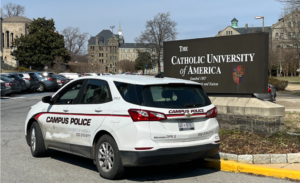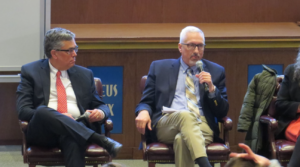A School for Every Student: The Growth of School Choice Programs

Image Courtesy of ThoughtCo.
By Elliana Arnold
In 2024, school choice remains a central part of educational policy discussions across the United States and has greatly affected the options families have concerning where they send their children to school. According to EdChoice, a nonprofit that follows the progress of school choice, 32 states, the District of Columbia, and Puerto Rico have school choice in some capacity, “including tax credits for parents who switch to different schools, private school scholarship programs, and education savings accounts.”
Libby Stanford, a reporter for Education Week, explains how this past year saw some form of school choice bill passed in at least 11 states with some states expanding programs providing private school vouchers and education savings accounts (ESAs). These vouchers allow families to use part or all of their “per-pupil funding to cover private school costs.” On the other hand, ESAs provide families with public funds intended to pay for other school expenses, such as online learning, homeschooling costs, tutoring, and more.
The American Federation for Children (AFC), an organization seeking to support families in choosing the best schools for their children, aims to increase knowledge of and access to these educational options.
Hera Varmah, an External Relations Associate at AFC, describes her personal experience with school choice, explaining how the Florida Tax Credit Scholarship (FTC) gave her family the opportunity to attend magnet, charter, and private schools. Florida offers state tax credits in exchange for contributions to scholarship funding organizations, which then award scholarships to students. Access to these options directly benefited Varmah and her many siblings, for each child required a different school that could meet their academic needs.
Varmah comments that parents know what curriculum will best suit their child, and she believes that “every family should have the choice of where to send their child.” Parents have a number of concerns about wanting school choice, including problems with bullying, the curriculum, safety issues, support for special needs, and the location.
A study from the Urban Institute (2019) reveals some of the academic benefits for students who have taken advantage of school choice. Investigating Florida, a state whose tax credit scholarship serves over 100,000 students making it the largest private school choice program in the nation, the study found that college enrollment increased by 15% for students who used the FTC program and by 46% for students participating in FTC for four or more years. The study states, “The benefit of the choice program grows with the number of years a student participated.”
In March 2023, Florida expanded their available school choice options and made their FTC more accessible to students, and they are not the only one with a growing school choice program.
Indiana is another state that has seen advances in academic achievement amongst its students since implementing school choice policies. Their expansive voucher program, aimed at students from low-income backgrounds, has significantly grown in the last decade, and according to AFC, “the state has seen a sharp increase in its National Assessment of Educational Progress (NAEP) scores since the 2011 education reforms were implemented.”
Additionally, Alabama just passed the Creating Hope and Opportunity for Our Students‘ Education (CHOOSE) Act earlier this month, making it the 14th state to offer families ESAs, which can cover an assortment of education expenses. Students attending participating schools can receive up to $7,000, while homeschooled students may receive up to $2,000.
Stanford predicts that school choice policies will continue to arise in 2024, as families seek more control over where their children receive their education.





